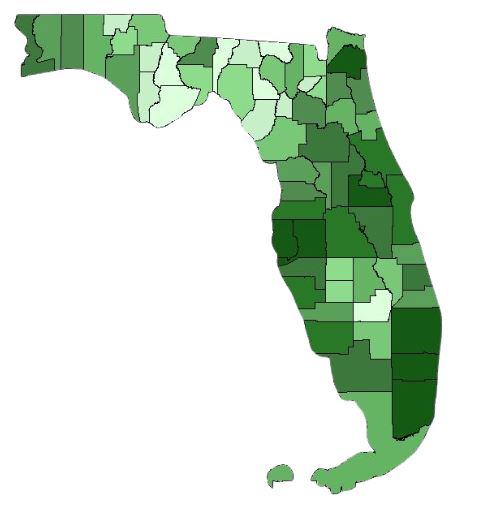Florida Demographic Data
Florida is one of the most populous and diverse states in the United States, with an estimated population of around 22 million residents as of 2025.
The state has experienced sustained growth driven by both domestic migration and international immigration, making it a vibrant and dynamic region
A notable feature of Florida’s demographics is its age distribution. The state has a high proportion of older adults, with approximately 21% of residents
aged 65 and above (as opposed to 17% which is the national percent of seniors). There are also slightly less kids (20%) compared to the national 22%
of the population being under 18.
Ethnically and racially, Florida is highly diverse. The majority of residents are White (non-Hispanic), accounting for around 53-55%, while Hispanic or
Latino populations account for 27%. Black or African American residents represent approximately 15%, with Asian communities constituting around 3%.
Florida’s diversity is further evidenced by its substantial immigrant population, with many originating from Latin America, the Caribbean, and other regions worldwide.
In terms of socioeconomic factors, the median household income stands at roughly $71,711, slightly below the national average ($77,173).
Urban areas such as Miami, Orlando, and Tampa are hubs of education and economic activity, boasting higher rates of college attainment and income levels compared to rural regions.
Most Floridians live in urban and metropolitan areas, particularly in South Florida, Central Florida, and along the Gulf Coast. Overall, Florida’s demographic landscape
is characterized by its rapidly growing, diverse, and aging population—a reflection of its appeal as a place of residence for many Americans and immigrants alike.




